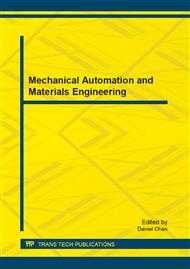p.817
p.822
p.828
p.833
p.838
p.843
p.849
p.854
p.859
A Model of Human Cone Based on Physiological Distribution
Abstract:
A good computer retinal model is the key to realize retinal prosthesis. In some of the previous studies, the modeling of cone cell was not considered in retinal models; in other studies, although the model of cone cell was included in the retinal models, its distribution features was hardly taken into consideration at all. In this paper we present an improved cone cell model and realize the model based on cameras. First, based on the physiological data that cone cell is high in the fovea and falls quickly with eccentricity increased, distribution function model of the retina is successfully built in a realistic way. Second, considering non-homogeneity distribution feature of the cone cells, we build a corresponding function between the pixel and the cone cell for simulating retina with a camera. Third, the cone cell model based on its distribution features is constructed. In the end, simulation is carried out for the model, and it is verified that the model is useful for the design of retinal prosthesis.
Info:
Periodical:
Pages:
838-842
Citation:
Online since:
August 2013
Authors:
Keywords:
Price:
Сopyright:
© 2013 Trans Tech Publications Ltd. All Rights Reserved
Share:
Citation:


